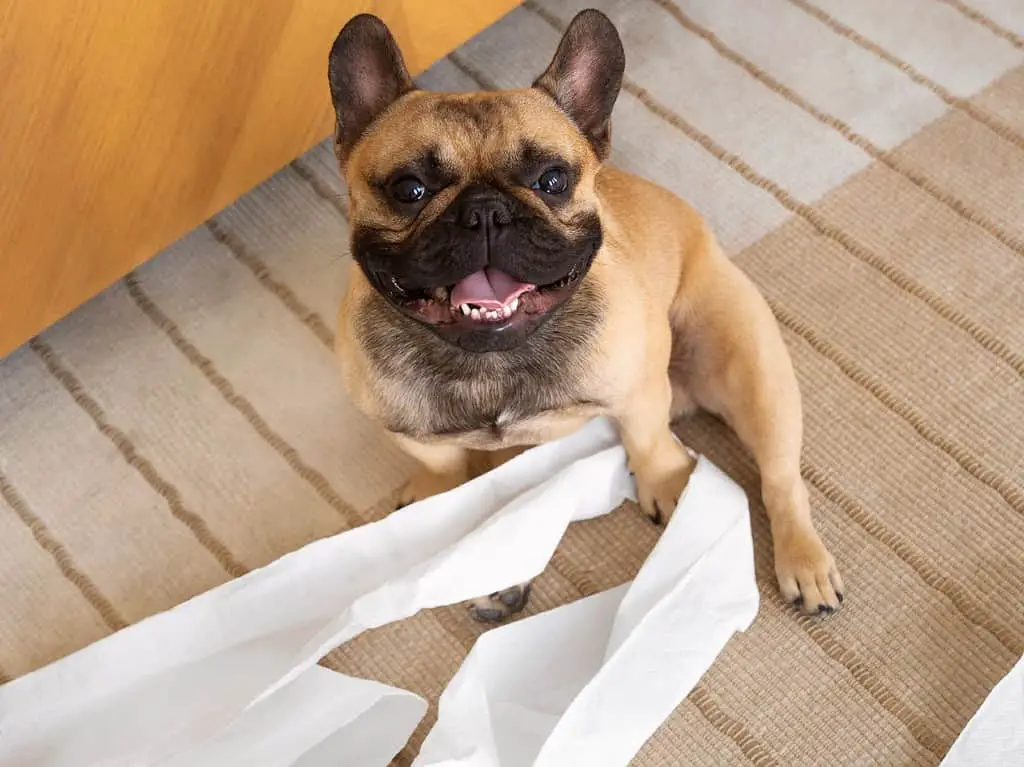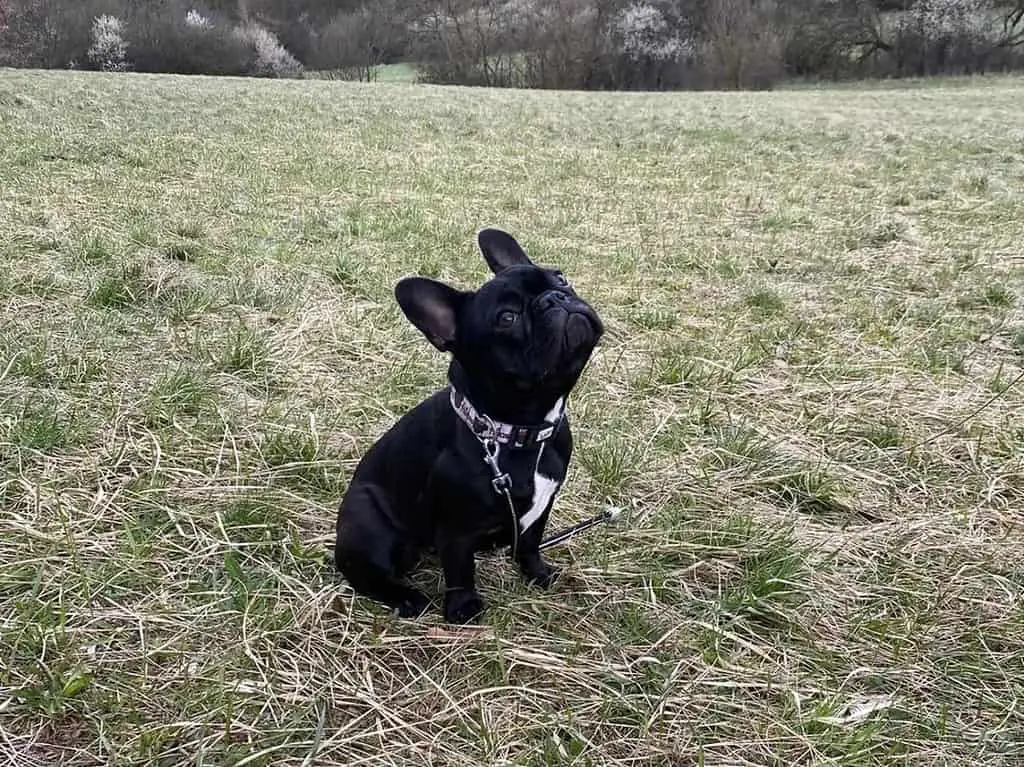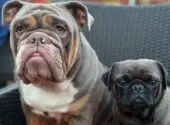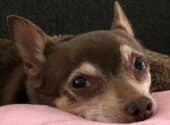If you recently welcomed a French Bulldog puppy into your home and feel intimidated by the potty training process, do not be discouraged.
Potty training can be a straightforward procedure with the right strategies. This guide teaches you five easy techniques – from establishing a routine to rewarding them for their good behavior.
Be sure to read until the end so you know all the tools needed to kick-start the potty training process.

Why You Should Potty Train A French Bulldog Puppy
Potty training is integral to raising a French Bulldog puppy to maintain cleanliness and aid in overall hygiene. Accidents can be avoided by assigning one location for the pup to expel its waste, minimizing any spread of bacteria or odors. This highly beneficial training helps keep living spaces tidy and safe from disease-causing organisms.
Potty training your puppy helps to form a strong connection and encourages effective communication between you. This requires regular reinforcement of positive techniques, like providing treats, praise, and mild corrections. As such, your puppy starts to comprehend your gestures, commands, and body language that are linked with the desired behavior. This fosters trust and recognition on both sides and builds a basis for future training and obedience.
Also, proper potty training is the key to a well-behaved French Bulldog puppy. While the initial training phase can sometimes be difficult, requiring time and dedication on your part, it will prove its worth in due course. This effort will produce a house-trained pooch that avoids making messes indoors. This leads to greater freedom for you as their owner, who can dedicate more attention to strengthening your relationship with them or simply spending quality time together.
Read also: Are French Bulldogs Good with Kids, Babies, & Toddlers?
Understanding When Your Frenchie Pup Needs To Potty
Several signs can indicate that your puppy needs to go potty.
Notice any restlessness or active behaviors in your puppy. If they start pacing, circling, or intensely smelling the floor’s surface, they could search for a place to urinate or defecate. Additionally, there may be an increase in their sniffing of furniture or other surfaces as they attempt to locate a familiar scent or marking.
Pay close attention to any unexpected shifts in your puppy’s behavior or body language traits. Potential vocalizations include whining, barking, and scratching at the door or cage. These are all signs of desiring to urinate or poop. Likewise, watch out for the timing of your puppy’s activities to optimize their potty training. Typically, puppies need to relieve themselves shortly after they wake up from a nap, after consuming meals, and after engaging in play or exercise. By recognizing that these activities can cause stimulation in the digestive system and lead to more frequent urination or defecation, you can set a routine for taking your French Bulldog puppy out frequently during those times – thus decreasing any accidents and facilitating successful house training.
When You Should Start To Potty Train A French Bulldog Puppy
Establishing good potty habits at an early age is imperative in the development of puppies, as they become more receptive to training and gain improved bowel and bladder control around 8-10 weeks of age. Therefore, it is advisable to start the potty training process when they reach this stage. Starting earlier will help prevent future incidents often caused by poor toilet etiquette.
Generally, by eight weeks old puppies have developed enough mobility to begin exploring their environment and understand where they should or should not go when eliminating waste. If potty training is postponed beyond this point, it may be difficult to break any bad habits that are already established.
But that’s not all; at 8-10 weeks, Frenchie puppies are typically more curious and willing to learn. At this age window, they can easily comprehend certain areas or cues in relation to relieving themselves. This is an advantage when introducing them to a routine.
How to Potty Train a French Bulldog Puppy
Establishing a potty-training routine for your pup is vital to responsible pet ownership. It is essential to the development of good behavior and cleanliness habits. Though the process may initially feel daunting, following our detailed instructions will provide a reliable plan that suits you and your puppy.
1. Establishing a Routine
Establishing a consistent routine can be an effective way to promote desirable behaviors in French Bulldog puppies. When they successfully eliminate themselves in the designated spot, rewarding them with affirmation, treats, or physical affection is essential. This praise serves as a reinforcement of the desired action and increases its chances of being repeated on future occasions. With regularity, puppies understand that positive results will be produced by behaving appropriately.
In addition, structuring a routine aids in building effective communication and comprehension between the puppy and the owner. Dogs appreciate stability and consistency within their environments; trust is developed between owner and pet by allowing them to know when they can access outdoor areas. Creating this bond benefits both parties, as expectations are realistically adjusted for either side.
As your puppy becomes accustomed to the day-to-day routine and develops better control of their bodily functions, it is possible to lengthen the intervals between bathroom breaks gradually. Receptive observation facilitates successful potty training; adjust the schedule based on your puppy’s individual needs. It should be noted that each pup learns differently; therefore, progress may be slower or faster, depending on the dog.
2. Picking the Right Spot
One of the most important considerations when selecting an area for potty training is its accessibility. It should be close enough for the pup and its owner to reach quickly and effortlessly. Location is paramount; ideally, it should be located near where your pet typically spends time or in a position that can easily be accessed from wherever they are resting – this decreases any potential complications, particularly while your puppy is learning to control their bladder or bowel movements.
Consider the surface of the designated bathroom spot. Evaluate what type of surface your pup may be exposed to in the future, and then replicate this with a designated area. If you have landscaped grass outdoors, designating an area with grass would be ideal. Additionally, if indoor pads or a litter box are planned for use, ensure the designated area reflects this accordingly.

Moreover, the state of cleanliness and sanitation must be considered when selecting a bathroom area for the puppy.
Consistent disposal of all waste materials will ensure a sanitary atmosphere for both the pet and the owner. Neglecting to comply with these expectations may lead to a decrease in hygiene standards that could, in turn, discourage dogs from urinating or defecating. They tend to favor clean areas over dirty ones.
3. Encouraging Good Behavior
For this step, you must reward the puppy for eliminating in the correct area. The aim is to encourage affirmative behavior by forming a positive correlation between going potty in a suitable spot and gaining a reward.
Once the puppy has emptied himself in the desired spot, providing verbal praise using a pleasant tone is crucial. Words such as “good boy” or “good girl” can demonstrate approval and convey a sense of accomplishment to the pup. Additionally, providing rewards like treats or toys immediately after elimination strengthens this positive behavior. The association created by these rewards will help the puppy form good habits over time.
If there is a delay in reinforcement, the puppy may not link it with its desired behavior. Hence, ensure you reward the puppy immediately and directly after successful elimination in its appropriate place.
As the puppy becomes increasingly accustomed to using their designated potty area, decrease rewards while still providing verbal encouragement and occasional treats to encourage the behavior. Through time and dedication from the owner and pup, a habit of toileting in their assigned spot will be developed, culminating in completing potty training.
4. Monitoring Food and Water Consumption
Owners should closely monitor their puppy’s food and water consumption to understand their digestive cycle. It is better to offer meals regularly than to leave food out continually. By adhering to a predefined feeding schedule, like during the morning, mid-day, and evening hours, one can recognize when it may be necessary for the puppy to relieve itself. This consistent approach is beneficial in creating a predictable elimination pattern for them.
Maintaining sufficient hydration is an important part of potty training puppies. However, it is best to regulate their water intake by providing access at intervals such as after meals or playtime instead of having the water available constantly; otherwise, this might lead to more regular bathroom trips.
Creating a record of the French Bulldog’s habits and patterns can assist owners in determining how frequently they are consuming, the rate at which their bodies are digesting, and when they need to go to the bathroom. This kind of documentation is especially beneficial while potty training as it allows you to accurately adjust interval lengths between potty breaks according to consumption patterns.
5. Dealing with Potty accidents
Maintain consistent, persistent habits when teaching a puppy desirable behaviors. Understand that mistakes are inevitable during the learning period, and reprimanding the pup for slip-ups may cause dog anxiety. Positive reinforcement should be implemented to foster trust and an understanding that elimination is expected to occur in desirable areas.
Act swiftly when an accident happens. To prevent future occurrences, if possible, interrupt your puppy’s behavior with a subdued sound like clapping your hands and immediately take them outside to their designated relief area. Do not reprimand or punish your pup, as this could cause confusion between negative results and going potty; possibly leading to further mistakes or feelings of humiliation.
Read also: French Bulldog Dog Breed: Personality, Care, Diet, & More
Things You Will Need For Potty Training Your Frenchie
Here are some essential items that you’ll need to ensure successful potty training for your beloved Frenchie pup.
Leash and Collar
A leash, collar, or harness is necessary for controlling your puppy’s movements as it relieves itself outdoors. Attaching the leash to the collar enables owners to guide their pets to an allocated area with a reduced risk of indoor accidents. The physical connection between the leash and collar provides swift feedback if they start to eliminate in an unacceptable place; this guidance reinforces their understanding of where they should go when nature calls.
In addition, using leashes and collars is essential in ensuring dogs’ safety during potty training by preventing them from wandering off.
Pee Pads
Investing in absorbent puppy pads is recommended during the initial potty training of a French Bulldog puppy. Providing a convenient and practical solution for those living in apartments or houses without access to external spaces, these pads are composed of an absorbent material that can efficiently soak up urine and stop it from spreading. This feature is handy for pet owners who may be away from home throughout lengthier intervals.
Furthermore, puppy pee pads are typically scented with attractants that mimic the smell of pheromones, ammonia, and grass, thereby encouraging the puppy to use them. Consistently placing these pads in a specified location, like the bathroom or a particular corner of your house, will create a habit for your pup to relieve itself there.
Puppy pads are a convenient and efficient choice for pet owners, as they require minimal effort for upkeep. Their disposability minimizes the requirement of frequent cleaning tasks, thus saving time for busy individuals. In addition to efficiency benefits, many of these pads come built with waterproof backing and are designed to prevent leakage from seeping into the flooring beneath them.
To assist with transitioning a puppy from indoor to outdoor potty training, puppy pads can significantly help. As the pup becomes trained to use these consistently, they should eventually be moved closer to the outside door as part of a progressive approach. This allows them to make an association between elimination and being outdoors, thereby facilitating a smoother, less confusing transition for both owner and pet.
Crate
Potty training can be made more efficient by utilizing a confined space, such as a crate, for your puppy. Dogs inherently dislike soiling the area in which they sleep, making this training method more effective.
Note: crates can be essential in preventing mishaps and minimizing the possibility of destruction within one’s home. When a dog cannot be actively monitored, confining them to a cage will protect them from unsupervised activities, which could lead to undesirable behavior or accidents. A crate should be used until the canine acquires proper potty etiquette, as they are then allowed progressively more liberty. But there’s one small catch – the crate should be spacious enough to allow the Frenchie to move and sleep comfortably.
A cleaning product designed for pet stains and odors should be used to eliminate any accidents during the training process. Common household cleaners may be unable to thoroughly neutralize the smell, thus repeating such accidents in the same spot.
Treats
Rewarding puppies with treats following desired behaviors can effectively reinforce these actions. When potty training, providing a treat as soon as the pup eliminates in an appropriate place will strongly deliver the message that this was the correct action, making the behavior more likely to be repeated.
Rewards in the form of treats can be a powerful motivator for dog potty training, thanks to the canine’s discerning sense of smell and natural drive toward food. By offering treats in exchange for positive behaviors, owners can take advantage of this instinct and provide their dogs with reinforcement when they hold off elimination until they are brought to their designated spot.
Rewards in the form of treats can provide concrete reinforcement that dogs may relate to their behavior. While verbal praise and petting are vital, giving treats provides a more concrete reinforcement that Frenchies can associate with their behavior. This clarity helps them comprehend which precise behavior they are gaining gratification from, consequently simplifying the comprehension process and internalizing suitable potty training techniques.
And you know what else? Treats serve as a valuable complement to numerous training approaches. Crate training, paper training, and teaching dogs to signal when they need to go outside can all effectively benefit from deploying treats to mark success and provide consistent rewards.
Conclusion: Enjoying Your Clean Home with a Potty-Trained Frenchie
With just five easy techniques and extra patience, you can have your French Bulldog puppy urinating and defecating in all the right places. Bid farewell to stained carpets and unpleasant odors, and say hello to an exceptionally trained Frenchie who knows when and where to go to do its business.




